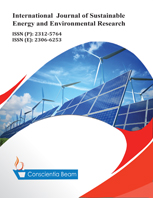A machine learning approach to forecast wind speed based on geographical location in Bangladesh
DOI:
https://doi.org/10.18488/13.v13i2.3777Abstract
This paper examines a learning approach to forecasting wind speed based on geographical location in Bangladesh. Most people use wind energy, a rapidly expanding renewable energy source, to produce electricity, replacing traditional fossil fuel-based electricity generation. The variable nature of wind speed necessitates an accurate estimate for planning wind power generation and grid integration. Machine learning models, based on various methods, commonly make wind speed predictions. This study implements machine learning algorithms, namely Random Forest Regression, XGBoost Regression, Multi-Layer Perceptron Regression, Ridge Regression, and Lasso Regression, to determine wind speed prediction accuracy. Firstly, we divide the dataset on wind records of Bangladesh into seven categories, each encompassing different geographical locations in Bangladesh, to account for the change in wind characteristics based on location, and then apply the algorithms to each category. The performance metrics Mean Absolute Error, Mean Squared Error, and Root Mean Square Error are utilized to draw comparisons. The findings showed that the performance of XGBoost makes it the most reliable tool for predicting wind speed in Bangladesh. The near proximity to large water bodies causes considerable variation in accuracy, i.e., it showed higher accuracy compared to the other three algorithms after applying the ensemble learning approach, which is more effective and accurate. This research will help in identifying optimal power plant locations and efficient linking methods to Bangladesh's power grid, ensuring smooth electricity access and efficient utilization of the country's energy resources.

